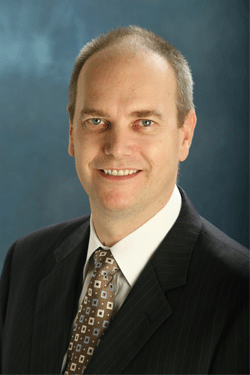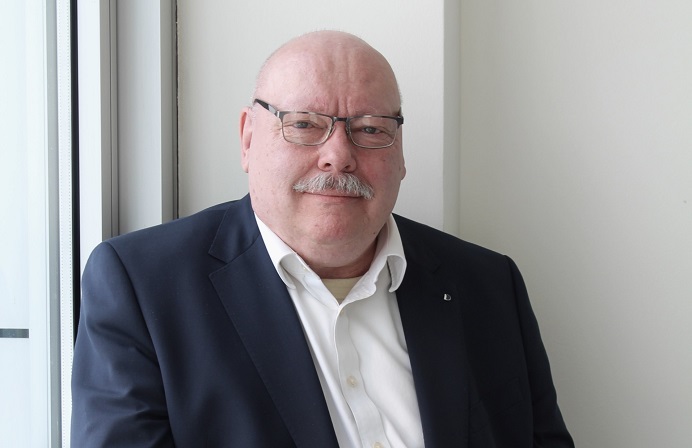
Somers: From an innovation standpoint, what sets the Singapore Exchange apart from its international counterparts, and which of the world’s exchanges do you think tend to lead the innovation charge?
Caisley: From an innovation standpoint, we are looked upon as the leading exchange in the region. We are the seventh largest exchange in the world, in terms of market value, and we haven’t got here by standing still.
We are the most international of the Asian exchanges with a wide range of key Asian equity index futures – including the Nikkei 225 and the MSCI Taiwan Index futures – and many other products representing various Asian markets. We were the first exchange in the world to trade the Nikkei Dividend Point Index futures from 17 June, even ahead of the Tokyo Stock Exchange.
We continue to find different ways to use innovation and offer new services to our customers. Last month, we announced our Reach initiative which comprises the fastest trading engine in the world, a state-of-the-art data centre to house our trading, market data and clearing infrastructure, and local communication hubs at key international financial centres. We are also behind the first exchange-backed crossing network in Asia, Chi-East.
At SGX we also have the right technology and mindset. Put all these together and you have huge potential to succeed.
In terms of which of the world’s exchanges do I think tend to lead the innovation charge, I would nominate NASDAQ OMX. We have been working with NASDAQ OMX as a major technology and advisory provider since 2004 and have developed a close working relationship. Their technology is innovative and best of breed; they also use what they sell. Given that Nasdaq OMX operates in a highly competitive environment in the US and Europe, we are able to leverage off of their experiences which puts their customers in a unique position.
Somers: SGX recently announced its plans to launch Reach, an initiative that will utilise technology from NASDAQ-OMX in an effort to build the world’s fastest trading engine. How will success be measured; and what will be the benefits realised?
Caisley: It’s obviously difficult to be specific about how we will measure the success, but what we’re looking to do is increase activity in our marketplace, not through organic growth, but through step increases such as this change in technology. In terms of our technology from a trading perspective, we are now is in the middle of the pack. This initiative brings us to the front of the pack in terms of the technology that we’ll be using for our customers to transact on the exchange. We’re hoping to grow liquidity and are expecting to have more customers. Our success will be measured in our profits.
Somers: The SGX became the first Asian exchange to set up a ‘dark pool.’ Can you tell us about this technology and what makes it so innovative?
Caisley: I am not managing that part of the business as it is managed through a joint venture that we have set up with Chi-X called Chi-East. The JV aims to provide a dark pool for trading securities listed in Hong Kong, Singapore, Australia and Japan. The technology that is being used is from Chi-Tech, which is the technology arm of Chi-X.
Somers: What are your views on cloud computing, and is there a place for it at the Singapore Exchange?
Caisley: Yes, there’s potentially a place for it in the exchange business perhaps in terms of a private cloud for compute power and data storage. However, because we need to be careful with what happens with our data, and ensure that customer data is protected and retained within Singapore, a public cloud is not something that we’re going to be investigating in the short term and certainly not for our key trading and clearing businesses. For SGX it’s not on the horizon in the next one to two years, but I’m not saying that it would be out of the question in the next three to five but would likely be limited to core applications.
Somers: What are your priorities for the next 12 to 18 months?
Caisley: The key for us is to implement SGX Reach which is the new trading platform for our cash market powered by the Nasdaq OMX new trading engine called Genium INET. We are expecting to launch this in the third quarter of 2011. We’re also launching a new state-of-the-art data centre in the first quarter of next year with new a co-location facility for our customers. Next year we’re also looking to replace our market data solutions with new ultra low latency platforms. In addition we have a number of other initiatives including the commencement of project to replace our security clearing and depository solution.
Somers: What do you feel are the most pressing IT needs facing the exchange sector today?
Caisley: It all boils down to "latency" and what we generally describe as “the race to zero”. Our aim is to provide our customers with the lowest latency possible and to access our market place and the gateway to Asia. Exchanges also face tremendous peaks in terms of throughput of transactions. From one day to the next you can have 300 per cent increase in transaction volume, so making sure your trading, clearing, market data, surveillance and risk management systems etc. can cope are some of the biggest challenges facing the exchange sector today. Regulation is also something that continues to require significant focus. The ‘flash crash’ on May 6th is a case in point, which has led to various organisatons and regulators talking about how we should regulate markets in terms of the checks and balances that we need to implement to make sure that the ‘flash crash’ doesn’t occur again. These will usually require technology changes by the exchanges as well as our customers. One thing is for sure it is never going to be boring working in the IT exchange sector!
Somers: What do you think are the most noticeable trends taking place within the exchanges worldwide?
Caisley: I believe there are three key trends:
1. Significant reductions in trading latency through the implementation of new trading engines;
2. Offering co-location facilities; and
3. Attracting new customers through Points Of Presence (POP) or hubs in key data centres around the world.
These are also the three key tenets of the Reach initiative. We have talked about trading engine latency earlier in terms of what Singapore Exchange is doing, but you only have to look around the region to see the flurry of activity in the other key exchanges to understand that this is a trend that many are emulating. In terms of co-location I believe that many exchanges in this part of the world are looking at providing co-location facilities to their customers. Whilst this is not a new phenomenon to exchanges in the US and Europe, it is relatively new to many exchanges in this region. SGX has had a proximity hosting solution in place since 2008 but will launch its new co-location service in the first quarter of 2011. SGX will also be launching a Point Of Presence (POP) in four major data centres in New York, Chicago, London and Tokyo with high speed links to SGX to attract new customers from these existing trading communities. A number of exchanges in the region are also looking to provide similar services.
Somers: What are the primary channels used by SGX’s customers; and how do you see this emerging within the next 3 to 5 years?
Caisley: A lot of our customers are starting to use the Internet for trading as well as being provided with market information on their phones. Whilst direct trading from phones is not with us yet in Singapore I’m sure it won’t be too far away – with the appropriate controls in place of course. Retail investors are also becoming very savvy about the market place. Many of them are managing their own investments and therefore they have been required to get a better understanding of the market place and a number are starting to move into less traditional products such as derivative products.
Somers: What core skill set do you look for in an aspiring IT protégé?
Caisley: Enthusiasm is a great place to start. I look for people who are enthusiastic, able to think out of the square and have good common sense (in addition to the appropriate IT qualifications and skills).
Somers: Every IT leader, particularly at your level, has a legacy they wish to be remembered for. What’s yours?
Caisley: I joined Singapore Exchange two and a half years ago and whilst a number of projects were already in train, in this short period we’ve already replaced both trading solutions and our derivatives clearing system. We have also launched a new website, a Pre Matching Settlement System and upgraded our entire wide area network. In the months ahead we are commencing the project to replace our securities clearing and depository solutions as well as our market data solutions and developing this new data centre. As you can see life at SGX is certainly not boring.
In terms of SGX, I hope that I’m remembered for taking the exchange to the next level in terms of its international recognition by refreshing and replacing its technology thus allowing the business development teams to expand and deliver new products and services when they want them as opposed to having to be limited by the constraints of legacy systems.





